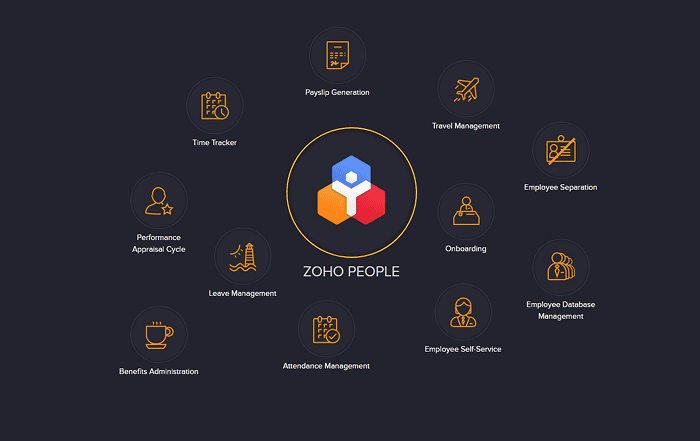
When it comes to digital marketing, exposure is your number one priority. Exposing your content builds up interest and attracts potential customers.
The more people visit your website, the higher the chance some of them will like what they see and decide to purchase your products/services.
However, more importantly, exposure helps you establish a recognized brand. Branding is very powerful in business, and consistent brand presentation can increase a company’s revenue by as much as 23%.
But how do you get that exposure?
Usually, it’s through your content. Relevant content ranks high in SERP – almost 68% of clicks go to the top five results. This is also why websites with great content look to squeeze as much out of it as they can through content syndication.
What Is Content Syndication?
Content syndication is a marketing practice where one website posts its original content on a third-party website. This strategy is meant to increase the exposure of the said website through its content.
Think about it this way: a website that’s ranked fairly low but has relevant content in its field can post its articles on higher-ranked websites and thus have higher chances of being spotted by people browsing the web for that topic.
However, content syndication should not be crossed with self-plagiarism or guest posting.
Guest posting pertains to original content created specifically for a third-party site, whereas syndication involves posting content you already have, with an embedded canonical URL leading back to the original.
Benefits of Content Syndication
The most important benefit of content syndication is exposure. Without exposure, your business will be left to wither on the vine, no matter how good your products are or how high-quality your service is.
The problem most businesses face early on is getting noticed. There are thousands of companies doing the same thing you do, and getting your foot in the door is your most pressing issue. Content syndication can help you with that.
Current statistics show that brands that blog generate 67% more leads, which means that if you manage to get your blog’s content posted on high-authority websites, that blog is going to yield a double benefit when it comes to bringing people to your business.
Besides exposure, content syndication also helps with your own SERP rankings. However, you must be careful – there is a fine line between syndication and self-plagiarism.
Make sure that all your syndicated content features a canonical link as a reference leading back to your own blog, or Google’s web crawlers will flag your article as a duplicate and, thus, irrelevant.
In essence, what you’re doing with syndication is creating more backlinks. Google values backlinking very highly, as every link from an authoritative website counts as a vote of confidence on the part of the website that’s being linked to.
The more backlinks your website has, the higher it ranks in SERP.
How to Effectively Syndicate Your Content?
So, now that we know what syndicated content is, how do we go about syndicating that content? How do we push our content out there and generate that much-desired exposure?
Set a goal
Well, the first thing we need to do is have a clear goal in mind. The best of the best content marketing agencies always advise their clients, before they actually start syndicating, to have concise objectives in mind.
Without an objective to strive toward, you cannot form an effective strategy.
This is because, without a goal, you don’t know what to measure. Analytics is a big part of marketing, as it provides insights into your customers’ behavior, as well as give you clues on how your content is doing and how much attention it’s attracting.
Basically, if you do not have a clear-cut objective, you’re left to wander in the dark.
So, before you start creating content, make sure you know for whom you are creating the content (what’s your target audience) and what do you want that content to do (inform, entice, promote).
Choose your platform
One of the major considerations when syndicating content is where to actually post it. Of course, you can post on any website that accepts syndications, but that doesn’t mean it’s a wise decision and that your article will do well.
As we said in the beginning, the main purpose of syndication is exposure. However, exposing yourself is not so important, as is exposing yourself to the right people. This means that you should carefully weigh how and where you want your content to be syndicated.
So, how do you choose where to post?
The key words here are target audience. Think of where your audience usually hangs out. If you’re writing for a specific niche, think of where you might find the readers that would appreciate your content.
When it comes to B2B, LinkedIn is one of the best places to syndicate your posts. Considering LinkedIn is a gathering of experts and professionals in their respective industries, your content is very likely to get noticed by the right people.
Quora or Reddit are also good places to syndicate, especially if you’re targeting a wider audience.
Quora is an excellent choice because people come there with their questions, and you can use that opportunity to divert the attention to yourself by providing answers.
Finally, consider going to Medium or Slideshare. When it comes to content syndication, you won’t find better places to do it. Both of these websites were created with the intention of bringing content creators and readers hungry for knowledge together.
Choose your content type
After you’ve established your goals and chosen a platform, it’s time you consider what type of content you want to syndicate.
Not all content will work for everyone – some people don’t mind reading huge walls of text and massive infographics, some like to read light articles on topics they find interesting, while some don’t like reading at all.
As we said, blogging is one of the most popular forms of content.
Articles usually do very well with the general public, as they provide enough information without overwhelming the reader. Also, most of them are written in relatively simplistic language, so a wide audience across all education levels can understand them.
However, that doesn’t mean all your blog posts should be light reading. If you’re looking to target a narrower audience, you should consider writing for them specifically, at the cost of wider coverage.
In the end, even if the wider audience is put off, you’ll still manage to attract that specific niche of people you were targeting, and that’s the most important part.
Finally, consider using the video format. Video is a very powerful tool in a marketer’s arsenal, as it attracts the most attention from viewers and is, by far, the easiest form of content to digest.
In fact, to attest to the power of video, consider these statistics: 96% of people say that they’ve watched a video to inform themselves of a product, and 88% were convinced to buy a product after watching it. Powerful stuff!
Choose how to present the content
There are three main ways of presenting content for syndication: reposting content as a whole, posting shortened, edited versions and posting small snippets and teasers.
The easiest way of syndicating content is by posting it in its full, original form. However, sometimes it might be more prudent to post abbreviated versions and leave the original on your own website.
The benefit of syndicating in this way is enticing the readers to come looking for more info. Naturally, not all people will be interested, but those who are will certainly follow the trail you’ve laid out for them.
The same goes with posting teasers. This works best if you’ve got embedded videos or infographics.
You can also abbreviate your article into just its main points and then tell your readers to follow your link for more information. Again, it’s a great way of subtly inviting people to come visit your website.
Finally, take your chosen platform into consideration. Large articles will fit certain platforms very well, but posting teasers and shortened versions might do a lot better on others. Go through your chosen platforms and take note of what others are posting there to get an idea.
Wrapping Up
And that’s all we have on content syndication for now. As you’ve seen, there are quite a few things you need to consider when spreading your content.
You need to have a clear goal, a firm understanding of your niche, and a proper platform on which to spread your word.
However, if you do manage to launch a successful syndication campaign, you’re looking at some significant benefits.
Not only will your business get the exposure it needs, thus increasing lead generation and, eventually, driving your conversion, but it will also build that much-needed brand awareness that will separate you from the rest as a leading figure in your industry.







